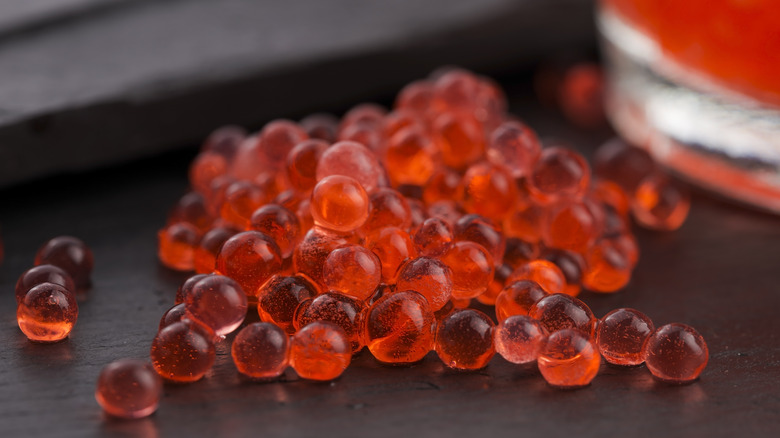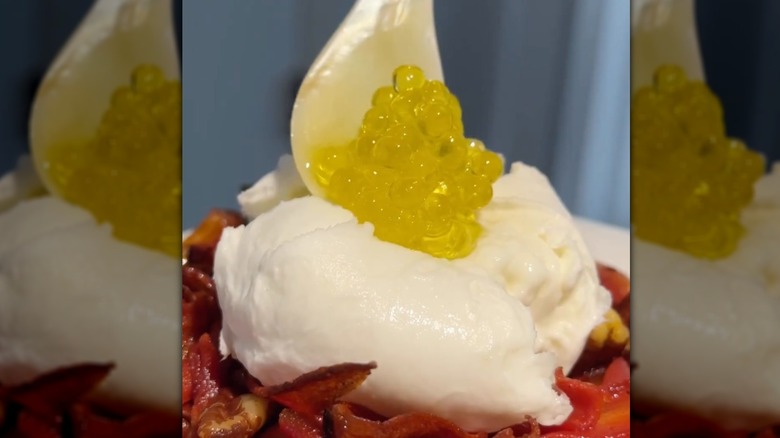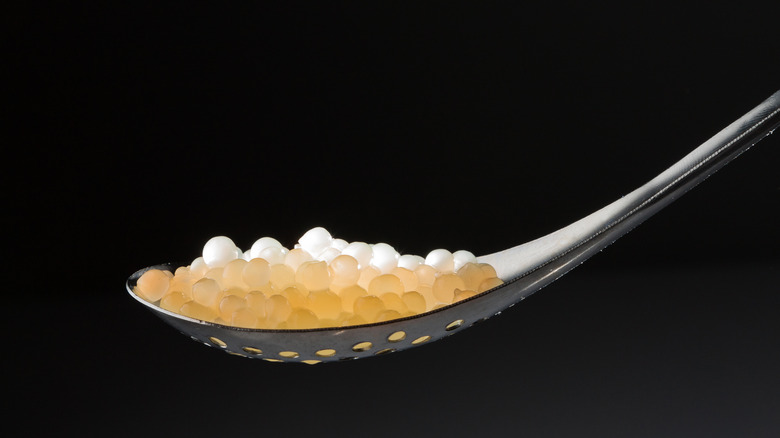Olive Oil Pearls Are A Genius Vegan Caviar Alternative
Olive oil pearls are a brilliant vegan alternative to traditional caviar or fish roe, offering a burst of flavor and texture in every bite. A combination of equal parts art and science, these tiny bubbles mimic the appearance and mouthfeel of fish roe but are entirely plant-based.
Not only are these caviar stand-ins a good vegan substitute, but they also serve as a chic garnish for a variety of dishes, imparting both a tiny flavor bomb and visual appeal. Their versatility makes them a favorite among home cooks and professional chefs alike, offering an easy way to elevate the presentation of any meal and impress dinner party guests with a touch of culinary sophistication. You can customize your olive oil pearls using various flavors, from classic extra virgin olive oil to oil infused with lemon, basil, or truffle. This allows for endless creative possibilities in the kitchen.
The process of spherification
Olive oil pearls are made by spherification, a type of molecular gastronomy that combines science and artistry to produce tiny, flavorful orbs reminiscent of caviar. This technique has gained popularity among chefs and food enthusiasts for its ability to transform familiar ingredients into visually stunning and texturally intriguing creations.
To make olive oil pearls, you'll need sodium alginate and calcium chloride, which are essential ingredients for spherification. Mix sodium alginate with your chosen liquid — in this case, extra virgin olive oil — in a blender until fully incorporated. Next, prepare a bath of calcium chloride solution. Carefully drop small portions of the olive oil mixture into the calcium chloride bath using a syringe or dropper. As the droplets make contact with the solution, they undergo a chemical reaction that forms a thin gel membrane around the oil, creating spherical pearls. After a brief setting, carefully remove the pearls from the bath and rinse them in cold water to stop the reaction. These delicate olive oil pearls are now ready to adorn your dish, adding both elegance and flavor.
The origins of spherification
Spherification was first patented as a cooking technique in the 1940s by an English food scientist named William J. S. Peschardt, but didn't become a trend until Spanish chef Ferran Adrià introduced the innovative method at his iconic restaurant El Bulli in the early 2000s. Adrià and his team sought to push the boundaries of traditional cooking by experimenting with food textures and presentations. "At El Bulli, they were doing things with spherification that bordered on looking like a magic trick. But because they were some of the best chefs in the world, it was really beautiful and impactful," Ali Bouzari, a culinary scientist who cofounded Pilot Research & Development, told Chemical & Engineering News.
This groundbreaking technique opened new avenues for culinary creativity, allowing chefs to encapsulate flavors and create visually stunning dishes with unique textures. "Spherified stuff is really delightful. It really is a fantastic experience," Bouzari says. "I've had it in many different restaurants, many different ways, and I still get a kick out of it. It is genuinely a really interesting sensory experience to eat something like that."


